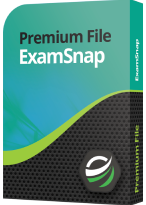
- Home
- Training Courses
- Certifications
- AWS Certified Data Analytics - Specialty (DAS-C01)
AWS Certified Data Analytics - Specialty: AWS Certified Data Analytics - Specialty (DAS-C01)
PDFs and exam guides are not so efficient, right? Prepare for your Amazon examination with our training course. The AWS Certified Data Analytics - Specialty course contains a complete batch of videos that will provide you with profound and thorough knowledge related to Amazon certification exam. Pass the Amazon AWS Certified Data Analytics - Specialty test with flying colors.

Curriculum for AWS Certified Data Analytics - Specialty Certification Video Course
| Name of Video | Time |
|---|---|
 Collection Section Introduction Collection Section Introduction |
1:00 |
 Kinesis Data Streams Overview Kinesis Data Streams Overview |
7:00 |
 Kinesis Producers Kinesis Producers |
9:00 |
 Kinesis Consumers Kinesis Consumers |
8:00 |
 Kinesis Enhanced Fan Out Kinesis Enhanced Fan Out |
4:00 |
 Kinesis Scaling Kinesis Scaling |
5:00 |
 Kinesis Security Kinesis Security |
1:00 |
 Kinesis Data Firehose Kinesis Data Firehose |
8:00 |
 [Exercise] Kinesis Firehose, Part 1 [Exercise] Kinesis Firehose, Part 1 |
6:00 |
 [Exercise] Kinesis Firehose, Part 2 [Exercise] Kinesis Firehose, Part 2 |
7:00 |
 [Exercise] Kinesis Firehose, Part 3 [Exercise] Kinesis Firehose, Part 3 |
9:00 |
 [Exercise] Kinesis Data Streams [Exercise] Kinesis Data Streams |
7:00 |
 SQS Overview SQS Overview |
7:00 |
 Kinesis Data Streams vs SQS Kinesis Data Streams vs SQS |
5:00 |
 IoT Overview IoT Overview |
9:00 |
 IoT Components Deep Dive IoT Components Deep Dive |
7:00 |
 Database Migration Service (DMS) Database Migration Service (DMS) |
7:00 |
 Direct Connect Direct Connect |
4:00 |
 Snowball Snowball |
6:00 |
 MSK: Managed Streaming for Apache Kafka MSK: Managed Streaming for Apache Kafka |
9:00 |
| Name of Video | Time |
|---|---|
 S3 Overview S3 Overview |
8:00 |
 S3 Storage Tiers S3 Storage Tiers |
12:00 |
 S3 Lifecycle Rules S3 Lifecycle Rules |
8:00 |
 S3 Versioning S3 Versioning |
3:00 |
 S3 Cross Region Replication S3 Cross Region Replication |
5:00 |
 S3 ETags S3 ETags |
3:00 |
 S3 Performance S3 Performance |
6:00 |
 S3 Encryption S3 Encryption |
8:00 |
 S3 Security S3 Security |
5:00 |
 Glacier & Vault Lock Policies Glacier & Vault Lock Policies |
3:00 |
 S3 & Glacier Select S3 & Glacier Select |
2:00 |
 DynamoDB Overview DynamoDB Overview |
7:00 |
 DynamoDB RCU & WCU DynamoDB RCU & WCU |
9:00 |
 DynamoDB Partitions DynamoDB Partitions |
3:00 |
 DynamoDB APIs DynamoDB APIs |
9:00 |
 DynamoDB Indexes: LSI & GSI DynamoDB Indexes: LSI & GSI |
5:00 |
 DynamoDB DAX DynamoDB DAX |
3:00 |
 DynamoDB Streams DynamoDB Streams |
2:00 |
 DynamoDB TTL DynamoDB TTL |
4:00 |
 DynamoDB Security DynamoDB Security |
1:00 |
 DynamoDB: Storing Large Objects DynamoDB: Storing Large Objects |
4:00 |
 [Exercise] DynamoDB [Exercise] DynamoDB |
9:00 |
 ElastiCache Overview ElastiCache Overview |
2:00 |
| Name of Video | Time |
|---|---|
 Intro to Amazon Quicksight Intro to Amazon Quicksight |
7:00 |
 Quicksight Pricing and Dashboards; ML Insights Quicksight Pricing and Dashboards; ML Insights |
5:00 |
 Choosing Visualization Types Choosing Visualization Types |
13:00 |
 [Exercise] Amazon Quicksight [Exercise] Amazon Quicksight |
10:00 |
 Other Visualization Tools (HighCharts, D3, etc) Other Visualization Tools (HighCharts, D3, etc) |
3:00 |
| Name of Video | Time |
|---|---|
 Encryption 101 Encryption 101 |
6:00 |
 S3 Encryption (Reminder) S3 Encryption (Reminder) |
8:00 |
 KMS Overview KMS Overview |
6:00 |
 Cloud HSM Overview Cloud HSM Overview |
2:00 |
 AWS Services Security Deep Dive (1/3) AWS Services Security Deep Dive (1/3) |
6:00 |
 AWS Services Security Deep Dive (2/3) AWS Services Security Deep Dive (2/3) |
5:00 |
 AWS Services Security Deep Dive (3/3) AWS Services Security Deep Dive (3/3) |
9:00 |
 STS and Cross Account Access STS and Cross Account Access |
2:00 |
 Identity Federation Identity Federation |
10:00 |
 Policies - Advanced Policies - Advanced |
6:00 |
 CloudTrail CloudTrail |
6:00 |
 VPC Endpoints VPC Endpoints |
3:00 |
| Name of Video | Time |
|---|---|
 AWS Services Integrations AWS Services Integrations |
11:00 |
 Instance Types for Big Data Instance Types for Big Data |
3:00 |
 EC2 for Big Data EC2 for Big Data |
2:00 |
| Name of Video | Time |
|---|---|
 Exam Tips Exam Tips |
9:00 |
 State of Learning Checkpoint State of Learning Checkpoint |
6:00 |
 Exam Walkthrough and Signup Exam Walkthrough and Signup |
4:00 |
 Save 50% on your AWS Exam Cost! Save 50% on your AWS Exam Cost! |
2:00 |
 Get an Extra 30 Minutes on your AWS Exam - Non Native English Speakers only Get an Extra 30 Minutes on your AWS Exam - Non Native English Speakers only |
1:00 |
| Name of Video | Time |
|---|---|
 Machine Learning 101 Machine Learning 101 |
7:00 |
 Classification Models Classification Models |
6:00 |
 Amazon ML Service Amazon ML Service |
6:00 |
 SageMaker SageMaker |
8:00 |
 Deep Learning 101 Deep Learning 101 |
10:00 |
 [Exercise] Amazon Machine Learning, Part 1 [Exercise] Amazon Machine Learning, Part 1 |
8:00 |
 [Exercise] Amazon Machine Learning, Part 2 [Exercise] Amazon Machine Learning, Part 2 |
6:00 |
Amazon AWS Certified Data Analytics - Specialty Exam Dumps, Practice Test Questions
100% Latest & Updated Amazon AWS Certified Data Analytics - Specialty Practice Test Questions, Exam Dumps & Verified Answers!
30 Days Free Updates, Instant Download!
AWS Certified Data Analytics - Specialty Premium File

- Premium File: 233 Questions & Answers. Last update: Apr 13, 2025
- Latest Questions
- 100% Accurate Answers
- Fast Exam Updates
AWS Certified Data Analytics - Specialty Study Guide

- Study Guide: 557 Pages
- Latest Questions
- 100% Accurate Answers
- Fast Exam Updates
Amazon AWS Certified Data Analytics - Specialty Training Course
Want verified and proven knowledge for AWS Certified Data Analytics - Specialty (DAS-C01)? Believe it's easy when you have ExamSnap's AWS Certified Data Analytics - Specialty (DAS-C01) certification video training course by your side which along with our Amazon AWS Certified Data Analytics - Specialty Exam Dumps & Practice Test questions provide a complete solution to pass your exam Read More.
Prepared by Top Experts, the top IT Trainers ensure that when it comes to your IT exam prep and you can count on ExamSnap AWS Certified Data Analytics - Specialty (DAS-C01) certification video training course that goes in line with the corresponding Amazon AWS Certified Data Analytics - Specialty exam dumps, study guide, and practice test questions & answers.

Amazon Training Courses











Only Registered Members can View Training Courses
Please fill out your email address below in order to view Training Courses. Registration is Free and Easy, You Simply need to provide an email address.
- Trusted by 1.2M IT Certification Candidates Every Month
- Hundreds Hours of Videos
- Instant download After Registration







